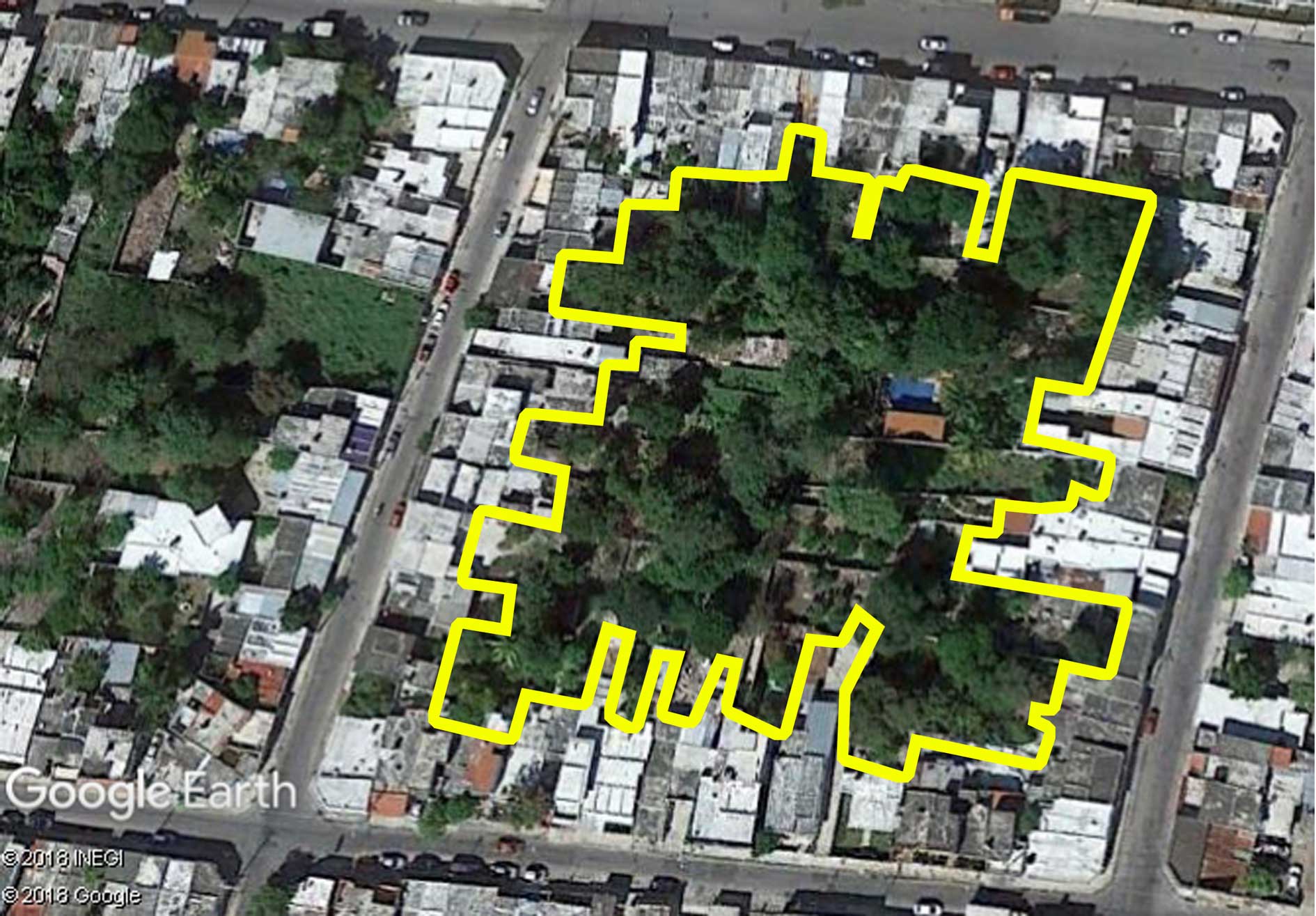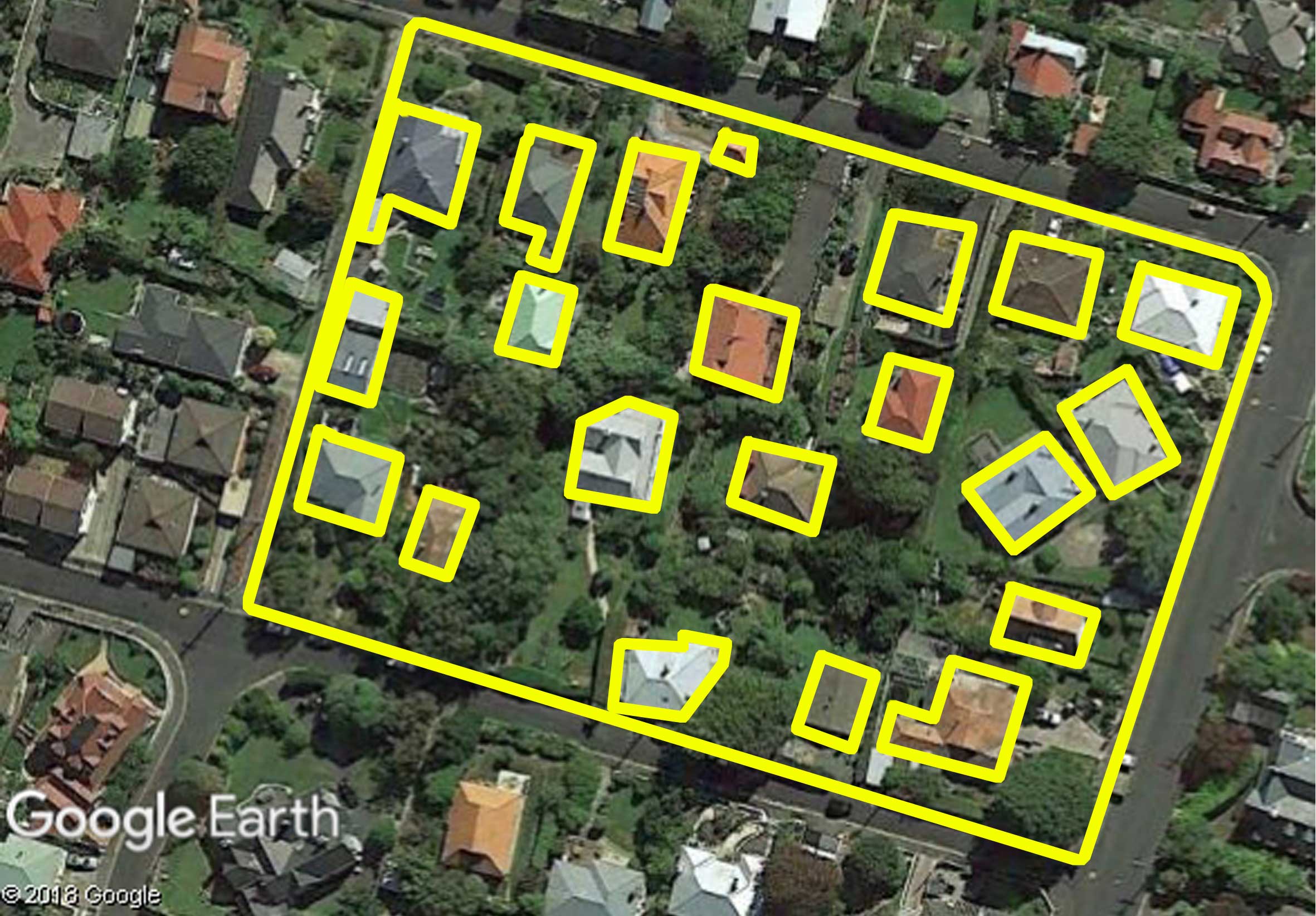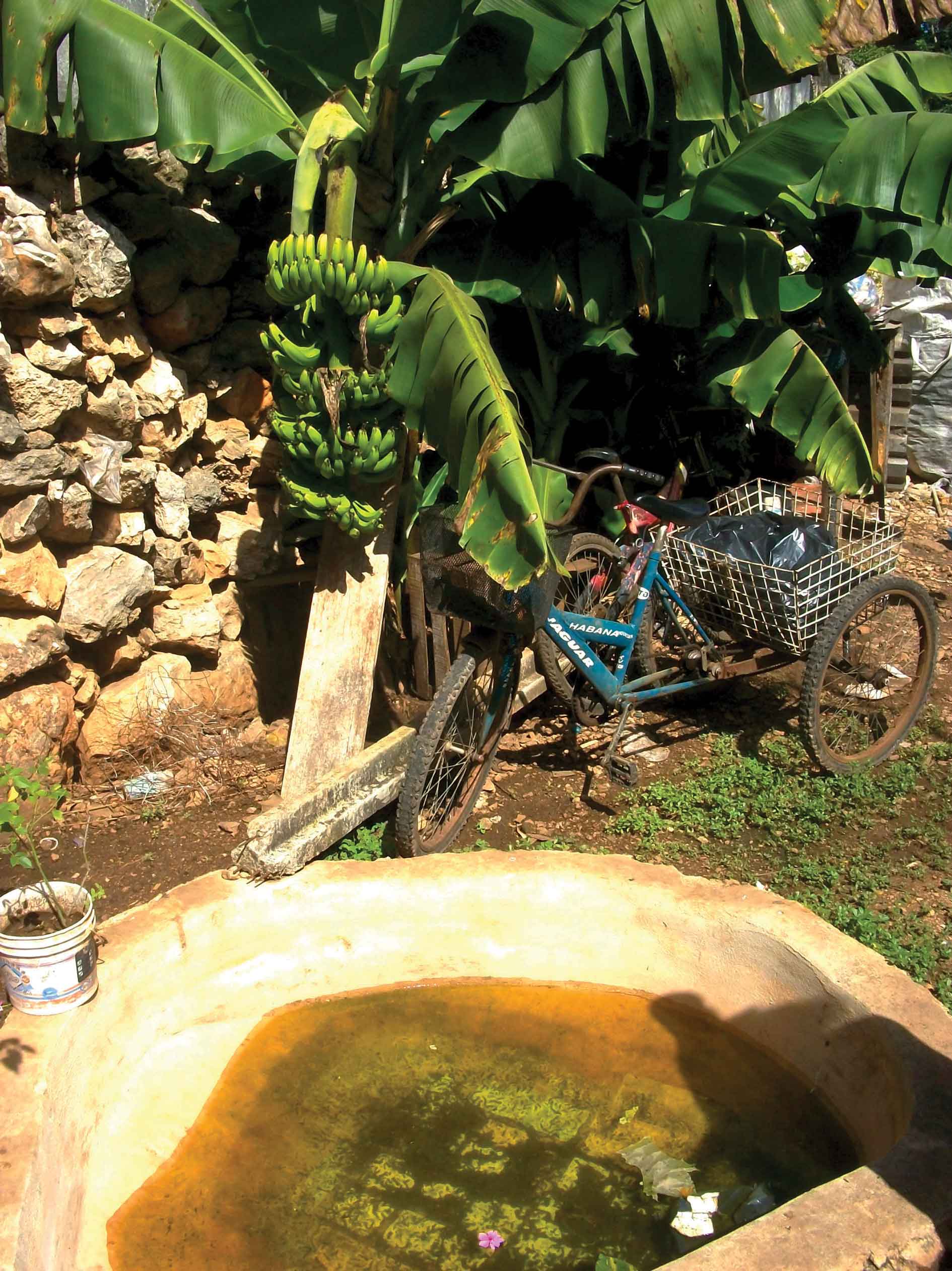The yard of my house: Historical and cultural landscape of cities
The exterior spaces that we build and inhabit, including the patios and residential gardens, often reflect in its configuration cultural aspects of its inhabitants. These spaces that arise with the passage of time and the effort of their owners become vital pieces of the shape of an urban landscape.
Even more, if we consider that a significant propor- tion of urban land is destined for residential use. In the city of Mérida, this is no exception.
The area occupied by the house is approximately 82 percent of the total area of the city.
Depending on the type of housing, the areas without construction, like courtyards and gardens, represent between 30 and 60 percent of the surface of a residential lot1.
“It was found in various neighbohoods of the city of Mérida that gardens and residential yards materialize aestetic, emotional and religious aspects.”

Configuration of courtyards and residential gardens in Mérida.
Photography: © 2018 INEGI, © 2018 Google Earth, con modificaciones realizadas por Mariana González Abundes
An example of this is a study carried out in the city of Dunedin in New Zealand, where it was found that outdoor spaces, mainly gardens, are a reflection of fundamental values of their owners and an opportunity for the creation of the domestic landscape in the city2.
In a similar study carried out in various neighborhoods of the city of Mérida, it was found that yards and residential gardens materialized aesthetic, emotional, and religious aspects, among others. These were related to the presence or absence of different types of vegetation, pavements, and the distribution of space3.

Configuration of courtyards and residential
gardens in Dunedin, New Zeland.
Photography: © 2018 INEGI, © 2018 Google Earth, con modificaciones realizadas por Mariana González Abundes
The presence of concrete in yards is related to the need for keeping this space “clean”. Unwanted insects and the need for socialization spaces led the owners to replace their green areas with concrete or other pavements.
As for the historical aspects, the courtyards are also good witnesses of the past. In its configuration, we can read the various stages of the building of a city. An example of this is the gardens of the city of Merida that still have a Mayan solar-type configuration.
These patios tell us about the history of the consolidation of the city since the growth of the city has been adhering to its landscape semi-rural areas that maintain this type of residential configurations.
Then residential outdoor spaces contribute significantly to the landscape of a city. This gives the possibility to any inhabitant to “make landscape” from their own patio, garden or residential outdoor space, and think of the landscape itself as the result of micro-processes carried out by the inhabitants of a city.

Mayan solar backyards in the city of Mérida








